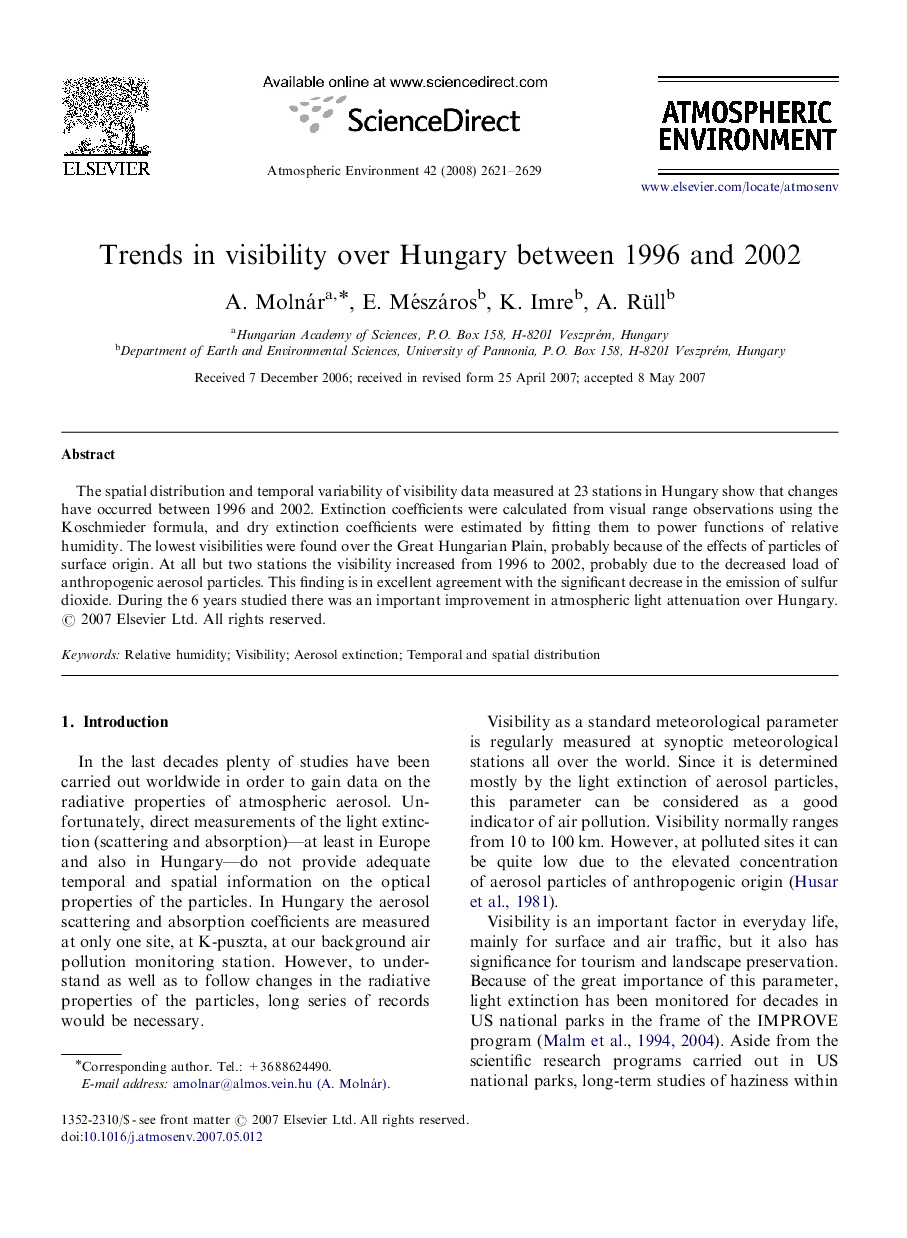| Article ID | Journal | Published Year | Pages | File Type |
|---|---|---|---|---|
| 4442832 | Atmospheric Environment | 2008 | 9 Pages |
The spatial distribution and temporal variability of visibility data measured at 23 stations in Hungary show that changes have occurred between 1996 and 2002. Extinction coefficients were calculated from visual range observations using the Koschmieder formula, and dry extinction coefficients were estimated by fitting them to power functions of relative humidity. The lowest visibilities were found over the Great Hungarian Plain, probably because of the effects of particles of surface origin. At all but two stations the visibility increased from 1996 to 2002, probably due to the decreased load of anthropogenic aerosol particles. This finding is in excellent agreement with the significant decrease in the emission of sulfur dioxide. During the 6 years studied there was an important improvement in atmospheric light attenuation over Hungary.
